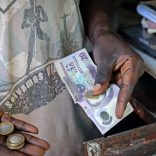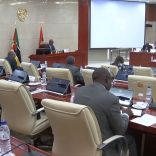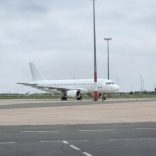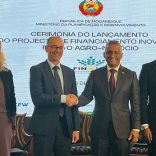Mozambique will sign a new programme with the IMF, "with a new vision"
African countries’ GDP at lowest level in two decades: World Bank

File photo / World Bank headquarters in Washington DC
Sub-Saharan Africa’s economic outlook is bleak as growth is expected to fall to 1.6% in 2016, the lowest in over two decades, the World Bank said on Friday.
“After slowing to 3% in 2015, economic growth in Sub-Saharan Africa is expected to fall further to 1.6% in 2016, the lowest level in over two decades,” the World Bank said in its latest publication Africa Pulse which analyses economic trends and data for the region.
“The sharp decline in aggregate growth reflects challenging economic conditions in the region’s largest economies and commodity exporters.”
The pulse noted that economic activity has been notably weak across oil exporting countries.
“Economic activity has been notably weak across oil exporters. At the same time, economic growth in about a quarter of the region’s countries is showing signs of resilience,” said the report.
Economic recovery requires massive investment in new and sustainable streams of productivity such as agro-industries, said the Africa Pulse and it urged African countries to take urgent steps to adjust to low commodity prices, address economic vulnerabilities, and develop new sources of sustainable, inclusive growth.
The Pulse recommended urgent economic diversification in the region, including through improvements in agriculture.
“By boosting agricultural productivity, countries will not only raise the incomes of farm households, but will also lower food costs and promote development of agro-industry,” said the WB adding that this would contribute to poverty reduction.
The trends shown by analysts in the publication indicate that economic growth for the Sub- Saharan countries is far from being homogeneous with some countries, such as Ethiopia, Rwanda and Tanzania posting annual average growth rates of over 6%.
According to the analysis, many of the countries facing sharp economic decline face headwinds from low commodity prices, tight financial conditions, and domestic policy uncertainties.
However, all was not lost as commodity exporters were expected to see a modest increase in GDP growth as commodity prices continued to stabilise.
The WB report showed that despite a recent pickup, commodity prices were expected to remain largely below their 2011–14 peaks, reflecting the weak global recovery.
“Against this backdrop, a modest recovery is expected with real GDP in Sub-Saharan Africa forecasted to grow 2.9% in 2017, and then rising moderately to 3.6% in 2018,” said the report.
Other recommendations made by Africa Pulse included the need for countries to “contain fiscal and current account deficits and rebuild policy buffers as well as accelerate structural reforms to bolster medium-term growth prospects”.
The Pulse noted that agriculture accounted for a third of region-wide GDP and employed two-thirds of the labour force, with the poorest countries most heavily reliant on it, yet government spending on this sector lagged behind other sectors.
The Pulse reiterated what was said by agricultural experts who met early September in Nairobi at the Africa Green Revolution Forum, that countries that increased the efficiency of public spending in agriculture were reaping “massive benefits,” among them being measurable reduction in poverty among farming households.













Leave a Reply
Be the First to Comment!
You must be logged in to post a comment.
You must be logged in to post a comment.